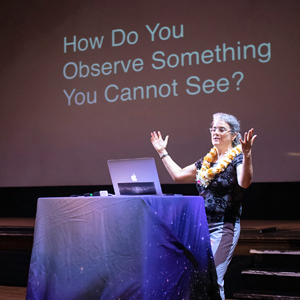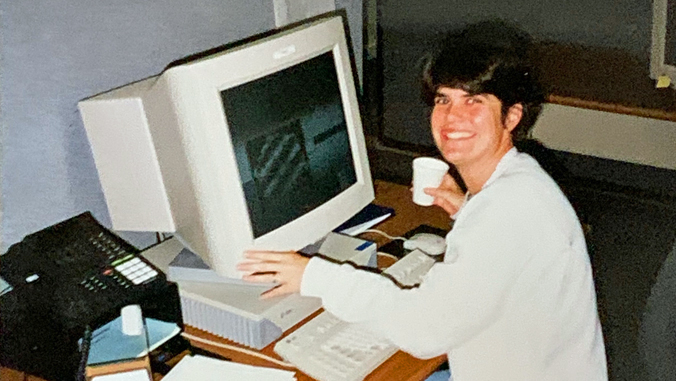
A pioneering astronomer who proved the existence of a supermassive black hole at the center of the Milky Way galaxy using a telescope on Maunakea won the Nobel Prize in Physics. Longtime W. M. Keck Observatory astronomer Andrea Ghez was awarded for her revolutionary research that harnessed the power of the observatory’s optical/infrared telescopes and Maunakea’s unparalleled view of the universe.

“On behalf of University of Hawaiʻi astronomers, I would like to add our congratulations to Dr. Ghez and to the W. M. Keck Observatory for this award and for the decades-long work on this groundbreaking research. This is yet another example of the outstanding contributions that astronomy in Hawaiʻi can make to our understanding of the universe,” said UH Mānoa Institute for Astronomy Director Robert McLaren.
Ghez is an astrophysics professor at UCLA and director of the university’s Galactic Center Group. She currently studies more than 3,000 stars that orbit the supermassive black hole in our galaxy. In January 2020, after conducting research at Keck, her team reported the discovery of a new class of bizarre objects—objects that look like gas and behave like stars—at the center of the Milky Way, not far from the black hole.
“We couldn’t be more elated for Andrea, who has devoted the entirety of her career to this research—over 25 years—all done at Keck Observatory. As only the fourth woman ever to win the Nobel Prize, this is a tremendous accomplishment for Andrea, and puts her in the company of such scientific luminaries as Madame Curie,” said Hilton Lewis, director of Keck Observatory.


